<< Previous | Displaying results 126-150 of 544 for "world war I" | Next >>
Learn about the Jewish community of Munkacs, famous for its Hasidic activity as well as its innovations in Zionism and modern Jewish education.
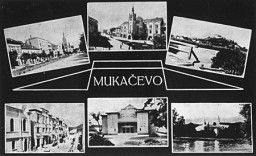
Lawyer Robert Kempner was expelled from Germany in 1935. After WWII, he would return to serve as assistant US chief counsel during the IMT at Nuremberg.
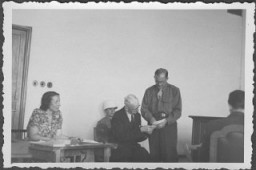
The Nazis used propaganda to promote their ideas and beliefs about a "national community." Read more about the principles, goals, and strategies of Nazi propaganda.
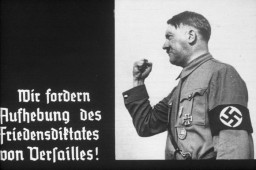
Before the Nazi rise to power, Jews represented less than 1% of Germany's population. Learn more about Jewish communities in Germany before the Holocaust.
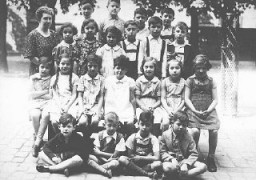
Jews have lived across Europe for centuries. Learn more about European Jewish life and culture before the Holocaust.
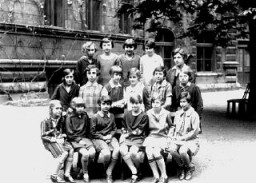
Learn about Jewish communal life and politics in Munkacs between WWI and WWII, including leaders, acculturation, Zionism, and communal organizations there.
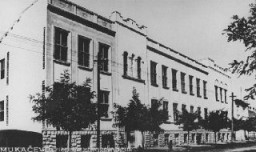
Learn about the history of Sighet, birthplace of Elie Wiesel. The Jewish population of Sighet was deported to Auschwitz in May 1944. Most of the deportees were gassed on arrival.
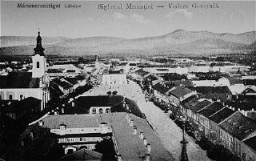
Efforts to hold some of the remaining perpetrators of crimes of the Holocaust accountable continue today, raising the question: is it ever too late to seek justice?
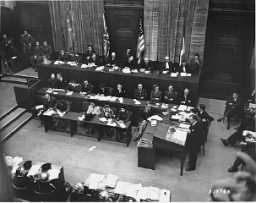
Consideration of American responses to Nazism during the 1930s and 1940s raises questions about the responsibility to intervene in response to persecution or genocide in another country.

The RuSHA Case was Case #8 of 12 Subsequent Nuremberg Proceedings against leading German industrialists, military figures, SS perpetrators, and others.
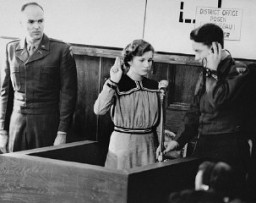
Ben Ferencz investigated and prosecuted Nazi crimes and devoted his career to creating an international system of justice. Learn about his activities and impact.
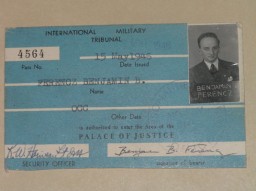
Kalisz had a vibrant Jewish community between WWI and WWII. Learn about its youth movements, schools, cultural life, sports, and religious life.
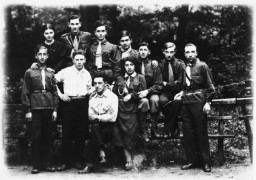
Jewish people have lived in Germany since the Middle Ages. Learn more about Jewish life, identity, and culture in Germany before the Nazis came to power.
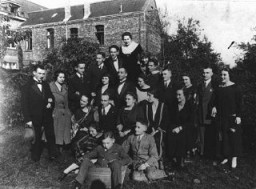
A relief organization, the American Jewish Joint Distribution Committee (JDC or Joint) was established in 1914. Learn about its activities before, during, and after WWII.
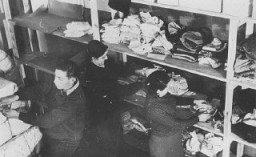
Brief overview of the charges against Hermann Göring, highest ranking Nazi official tried during the International Military Tribunal at Nuremberg.
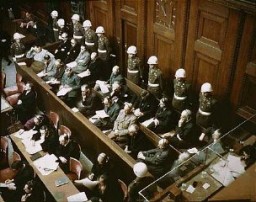
After the Holocaust, the IMT charged the first case of “incitement to genocide.” Learn more about the crime and its application in modern genocide law.
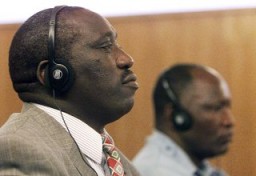
John Dolibois immigrated to the United States in 1931 at the age of 13. After graduating from college, Dolibois joined the 16th Armored Division of the US Army. Due to his German language skills, he became involved in military intelligence. He returned to Europe in this capacity toward the end of World War II. Dolibois interrogated German prisoners of war, including leading Nazis, in preparation for the postwar trials of war criminals. He was later appointed US ambassador to Luxembourg, his birthplace.

After WWII, prosecutors faced the challenge of assessing the guilt of propagandists whose words, images, and writings had supported Nazi brutality and mass murder.
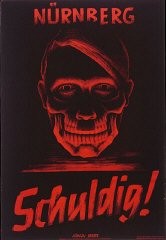
Why did the United States go to war? What did Americans know about the “Final Solution”? How did Americans respond to news about the Holocaust? Learn more.
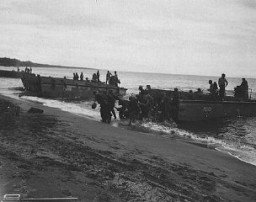
John Dolibois immigrated to the United States in 1931 at the age of 13. After graduating from college, Dolibois joined the 16th Armored Division of the US Army. Due to his German language skills, he became involved in military intelligence. He returned to Europe in this capacity toward the end of World War II. Dolibois interrogated German prisoners of war, including leading Nazis, in preparation for the postwar trials of war criminals. He was later appointed US ambassador to Luxembourg, his birthplace.

World War II began with the German invasion of Poland in September 1939 and ended in Allied victory in Europe with the German surrender in May 1945. May 8 was proclaimed VE (Victory in Europe) Day. In this footage, United States president Harry S. Truman proclaims victory in Europe and promises to continue the war in the pacific until the unconditional surrender of Japan.
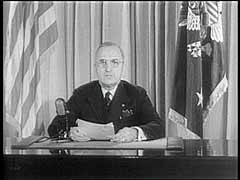
John Dolibois immigrated to the United States in 1931 at the age of 13. After graduating from college, Dolibois joined the 16th Armored Division of the US Army. Due to his German language skills, he became involved in military intelligence. He returned to Europe in this capacity toward the end of World War II. Dolibois interrogated German prisoners of war, including leading Nazis, in preparation for the postwar trials of war criminals. He was later appointed US ambassador to Luxembourg, his birthplace.
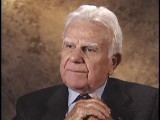
Wilek was the son of Jewish parents living in the southeastern Polish town of Lvov. His family owned and operated a winery that had been in family hands since 1870. Wilek's father died of a heart attack in 1929. Wilek entered secondary school in 1939. Soon after he began school, World War II began with the German invasion of Poland. Lvov was in the part of eastern Poland annexed by the Soviet Union. Although the Soviets took over Wilek's home and the family business, Wilek was able to continue his…
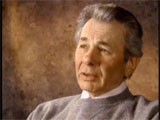
Nazi anti-Jewish laws began stripping Jews of rights and property from the start of Hitler’s dictatorship. Learn about antisemitic laws in prewar Germany.
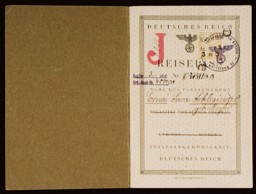
In the 1980s and 1990s, historian Peter Black worked for the US Department of Justice Office of Special Investigations, as part of a team tracking and prosecuting suspected war criminals. Black later served as the Senior Historian at the United States Holocaust Memorial Museum.
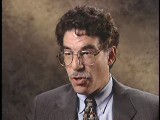
We would like to thank Crown Family Philanthropies, Abe and Ida Cooper Foundation, the Claims Conference, EVZ, and BMF for supporting the ongoing work to create content and resources for the Holocaust Encyclopedia. View the list of donor acknowledgement.